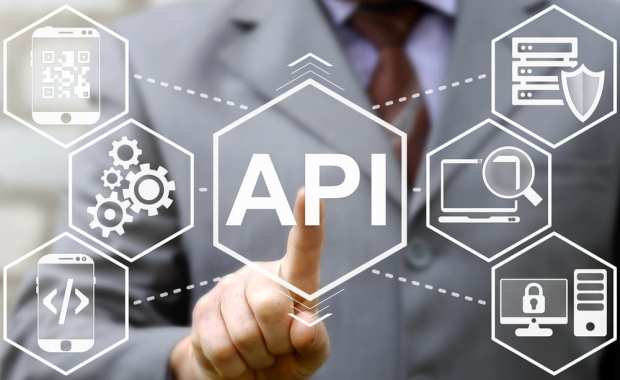Citi Banks On API Calls To Make Treasury Ops Real Time

Citi launched CitiConnect in 2016 – and since then logged 157 million API calls. Tapodyuti Bose, global head of channels and enterprise services, Citi Treasury and Trade Solutions, tells Karen Webster how integrating treasury services across clients’ ERP platforms smooths cash flow across all manner of transactions, B2B, B2C and C2B among them.
Less than three years after the November 2016 launch of application programming interfaces (APIs) through CitiConnect, Citi said this month that its corporate treasury APIs and platforms have processed more than $26 billion for enterprise clients.
The CitiConnect platform has processed more than 157 million API calls since its launch, and the APIs focused on a range of treasury services integrated directly with 55 corporate clients’ enterprise resource planning platforms.
In an interview with Karen Webster, Tapodyuti Bose, global head of Digital Channels & Data, Citi Treasury and Trade Solutions, said the numbers spotlight the desire of Citi’s corporate clients to run treasury operations as efficiently as possible, across the gamut of functions that span making payments, collecting payments and managing day-to-day operating cash flow.
“There’s also the other side of the equation for which treasury is responsible, which is: As the firms grow, as they go into new markets, they have new distribution and business models,” Bose said. “Their distribution changes, and their supply chains change.”
The Consumer as Part of the Flow
Bose said there are significant changes taking place amid Citi’s corporate clientele, which include a shift from purely business to business flows to business to consumer (B2C) and consumer to business (C2B) flows.
Traditional intermediaries, he said — whether on the supply chain side or distribution sides of business interactions — are being disintermediated. The disintermediation is taking place as smart device and mobile technologies are becoming more affordable and available to an increasingly broader swath of the global population.
“There is an opportunity that I find key,” he told Webster, for firms to enter “new business models where the consumer becomes part of the commercial flow.”
As the consumer becomes part of the overall business flow, Bose said, it makes sense that the consumer experience would become critical to the firms interacting with them.
“Now if you are selling goods digitally, if you’re collecting payment digitally and you’re doing so directly with the end consumer, the experience often impacts [companies’] ability to sell and have that piece of business come to you,” Bose said.
The overarching theme across all manner of commerce has been data — and where data flows freely, there are actionable insights, especially as the consumer experience is concerned.
He said the consumer experience gets a lift when firms embrace “instantaneous” processes aimed at satisfying those customer expectations — so real-time functions are getting increasing attention from enterprises.
Bose said the sheer number of transactions has been on the rise, while the average transaction value has been coming down.
“It’s the miniaturization of the transaction that is seeing explosive growth, and scalability is another major trend that we have seen,” he said.
One other sea change he spotlighted: There has been so much digitization that cybersecurity has become a paramount consideration.
The Most Popular Calls
Drilling down a bit into the 157 million calls, Bose noted that some of the most popular among treasurers are those tied to knowing where the money is, so to speak — account balance inquiries and payment status reports, for example.
With insight into when a credit comes into an account — through consumers who may be shopping on a site — or a balance notification is in place through an API, goods can be dispatched with haste, instead of having to wait a week.
“The magic centers around being able to disburse something when it is critically required by the consumer where it can have the most impact,” Bose said.
Even beyond eCommerce, a treasurer who is managing multiple bank accounts across several connected legal entities can leverage APIs to make the most judicious use of operating cash.
“You’re not making decisions based on last week’s information,” he said, or on data that comes through amid batch processing.
Asked by Webster about instant payments, he said such transactions may be relatively muted in the U.S., but they are gaining traction in Asia and other regions, where credit card penetration, not to mention usage, is low.
In the developed world, he said, there may be hesitation to shop online using bank account data — especially in an age where synthetic ID fraud remains a threat.
But emerging markets have embraced tokenization, forms of universal ID numbers and UPI — all of which may give customers comfort and smooth the checkout process from friction that may be in place with traditional card-based transactions.
With a nod toward the embrace of the more than 50 APIs on offer, he said other API calls that are likely to prove popular in a real-time world include those focused on foreign exchange, and for collections and request to pay, in addition to payout of loan proceeds.
“We are also getting into inquiries where customer accounts receive credit using API, and we have rolled out APIs specifically for mobile services that our customers have,” he said.
Citi is also seeing API calls used for payment processing around bank holidays and cutoff times.
“APIs have the ability to power several changes in a way that helps businesses reach more customers and consumers directly, and reach them with a good customer experience, all in real time,” he said.